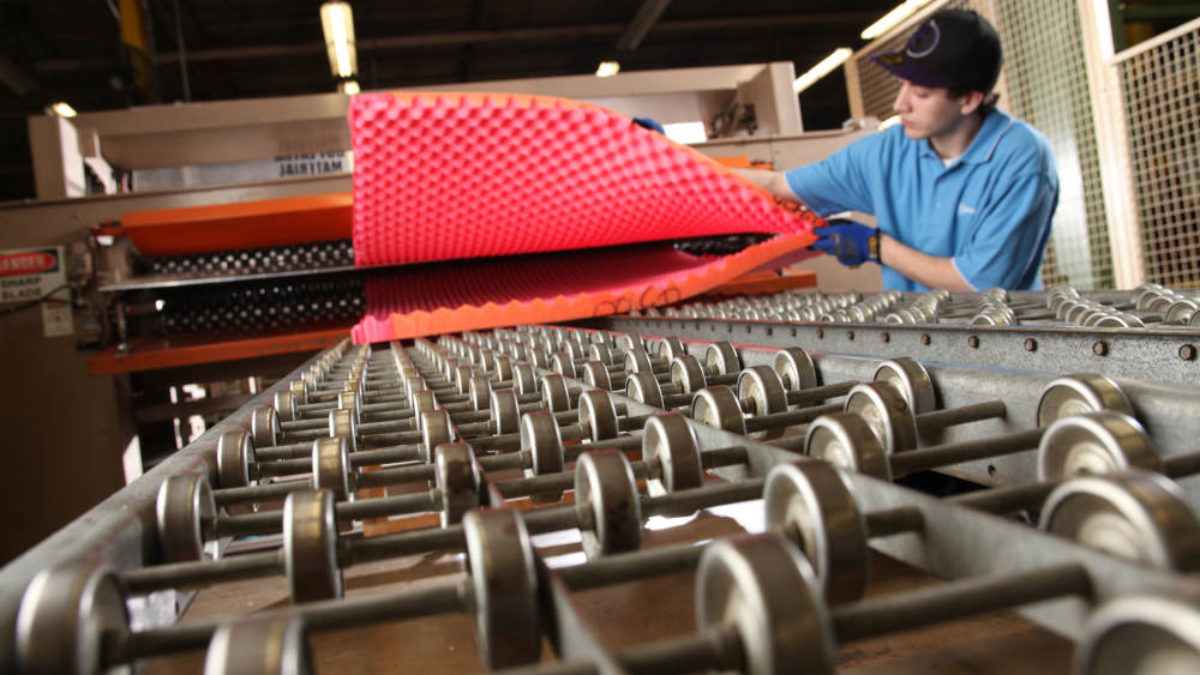Foam is often used in applications that require temperature control and insulation because of their level of thermal conductivity and resistance. While not all foams are ideal for these applications, many can be used to control the flow of heat because of how they are structured. It all comes down to the thermal conductivity of the foam material.
What is thermal conductivity in foam, and how can knowing this value help you choose the right foam for your application?
What is Thermal Conductivity in Foam?
Thermal conductivity is the ability of a material to conduct heat. In terms of choosing a foam, thermal conductivity denotes the amount of heat a piece of foam allows to be transferred through it. This measurement will tell you how resistant a piece of foam is to heat transfer, thus how well the piece of foam will serve as an insulator in any application. Lower thermal conductivity in a piece of foam means that the material is better able to resist the transfer of heat, making the foam a better insulator. Higher thermal conductivity means that the foam will not serve as a good insulator.
Thermal conductivity is measured in measured in BTU/(h⋅ft⋅°F).
Why Foams are Generally Good Insulators
Some foam works as a thermal insulator because of the gas they contain within their structure. Gas is a poor thermal conductor when compared to liquids and solids, making it an ideal insulator. When gasses are trapped within the structure of a piece of foam, they help insulate against heat by slowing down the transfer of heat through the piece of foam. Pieces of foam with many gas-filled pockets (like polyurethane) prevent convection (the process by which heat is transferred by the movement of air) because of the large number of gas-filled pockets they contain within them.
This is the reason why many foams are used in insulation and fenestration applications, and why they are often used as packaging materials for products that require temperature control (i.e., food and pharmaceuticals).
Common Foams that Make Good Insulators
Choosing the right foam for your application is crucial. If you are looking for foams that are good insulators, consider these options:
Polystyrene
Expanded polystyrene (EPS) and extruded polystyrene (XEPS) are both good insulators because the lightweight thermoplastic foams are mostly made of air.
Polyurethane
Polyurethane offers some of the best thermal insulation properties at lower thicknesses. Urethane foams can resist high temperatures without allowing the heat to easily transfer through the material.
Expanded Polyethylene (EPE)
EPE is a closed-cell polyethylene foam that is dense, semi-rigid, and offers excellent thermal resistance. Its high strength to weight ratio also allows you to use less of the material while protecting your products against impacts and heat loss.
Expanded Polypropylene (EPP)
EPP is closed-cell bead foam that offers outstanding thermal insulation for both hot and cold environments. The material can be made in a variety of densities, offering versatility in its uses and applications.
Other Closed Cell Foams
Many closed cell foams have interconnected cells and pores that are sealed off. This not only gives them better thermal insulation, but it also helps protect them against moisture. These types of foam can also act as insulators against sound.
Need foam that acts as a strong insulator? Get in touch with the foam experts at Amcon today.


